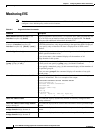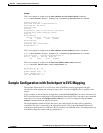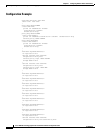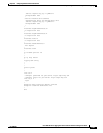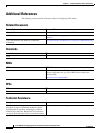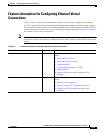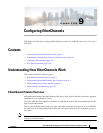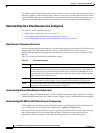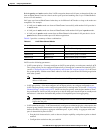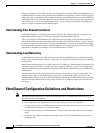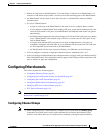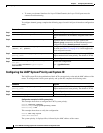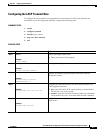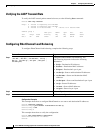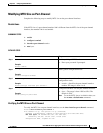
9-2
Cisco ASR 901 Series Aggregation Services Router Software Configuration Guide
OL-23826-09
Chapter 9 Configuring EtherChannels
Understanding How EtherChannels Work
If a segment within an EtherChannel fails, traffic previously carried over the failed link switches to the
remaining segments within the EtherChannel. When a failure occurs, the EtherChannel feature sends a
trap that identifies the router, the EtherChannel, and the failed link. Inbound broadcast packets on one
segment in an EtherChannel are blocked from returning on any other segment of the EtherChannel.
Understanding How EtherChannels Are Configured
This section contains the following topics:
• EtherChannel Configuration Overview, page 9-2
• Understanding Manual EtherChannel Configuration, page 9-2
• Understanding IEEE 802.3ad LACP EtherChannel Configuration, page 9-2
EtherChannel Configuration Overview
You can configure EtherChannels manually or use the Link Aggregation Control Protocol (LACP) to form
EtherChannels. The EtherChannel protocols allow ports with similar characteristics to form an
EtherChannel through dynamic negotiation with connected network devices. LACP is defined in IEEE
802.3ad.
Table 9-1 lists the user-configurable EtherChannel modes.
Understanding Manual EtherChannel Configuration
Manually configured EtherChannel ports do not exchange EtherChannel protocol packets. A manually
configured EtherChannel forms only when you enter configure all ports in the EtherChannel compatibly.
Understanding IEEE 802.3ad LACP EtherChannel Configuration
LACP supports the automatic creation of EtherChannels by exchanging LACP packets between LAN
ports. LACP packets are exchanged only between ports in passive and active modes.
The protocol learns the capabilities of LAN port groups dynamically and informs the other LAN ports.
Once LACP identifies correctly matched Ethernet links, it facilitates grouping the links into an
EtherChannel. The EtherChannel is then added to the spanning tree as a single bridge port.
Table 9-1 EtherChannel Modes
Mode Description
on This is the mode that forces the LAN port to channel unconditionally. In the on mode, a
usable EtherChannel exists only when a LAN port group in the on mode is connected to
another LAN port group in the on mode. Because ports configured in the on mode do not
negotiate, there is no negotiation traffic between the ports. You cannot configure the on
mode with an EtherChannel protocol.
passive (Default for LACP) LACP mode that places a port into a passive negotiating state, in which
the port responds to LACP packets it receives but does not initiate LACP negotiation.
active LACP mode that places a port into an active negotiating state, in which the port initiates
negotiations with other ports by sending LACP packets.



